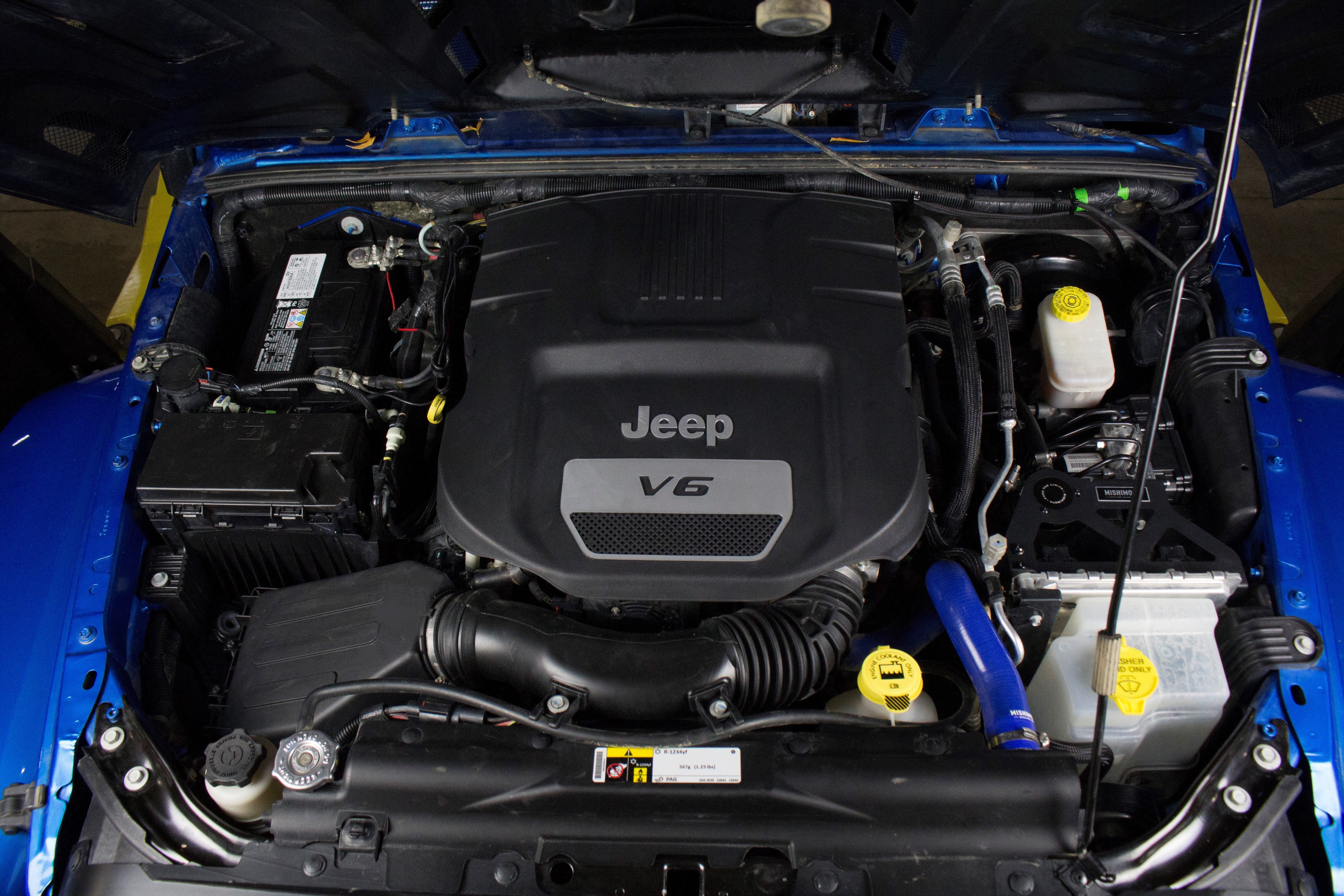
Got Trucks, Got Jeeps (VOL 2.) - Catch Can R&D Part 2: Gunk In The System
Our engineering department has made some great strides in completing this catch can design as they have reached the final R&D stages. Overall strength and can rigidity were primary design goals for the kit, as we are aware of the rough and tough off-road lives many of these Wranglers live. We want to be sure that once you install this can on your car, it will stay put, no matter what rigorous environment you take your JK Wrangler through.
Bracketry starts with precise design and component fabrication. Our engineers had to be sure that our bracket would effortlessly hold our 2oz catch cans without any damage-inducing stress. In our last update, we left off with some of the cool tech we planned to use. The first tool we used was our FARO Design ScanArm.
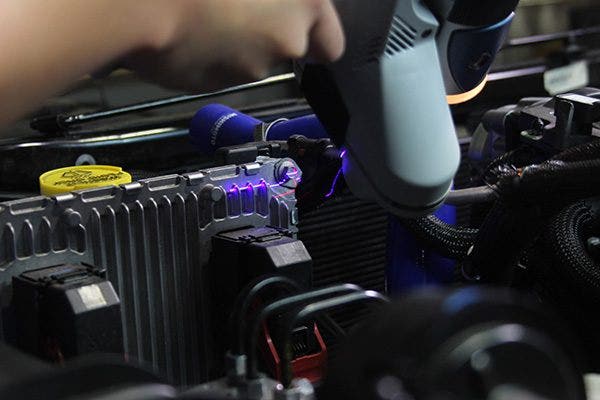
Scanning the area where the bracket will go
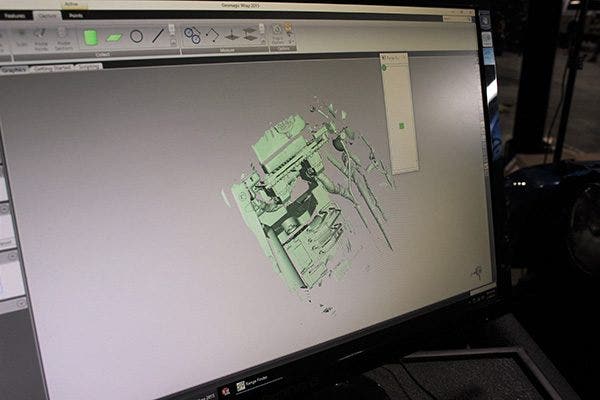
The scan gets uploaded in real-time!
This arm allows the engineer to literally paint an area with digital lasers into a computer file and any part that comes to mind can be designed within that area using computer-aided design software. It's as accurate as one can get without making a physical prototype using measurements that may not be as accurate or fit well the first time around.
The next step is to make the proposed design a reality. Our engineer can do that quickly and painlessly with the use of our waterjet. Our waterjet shoots out water mixed with abrasive material at pressures of over 60,000 psi, easily cutting through sheets of metal. This is done by uploading file dimensions into the waterjet's computer, and letting the machine cut that outline. Anything designed on a flat plane can be used and cut to extremely small tolerances and high levels of accuracy.
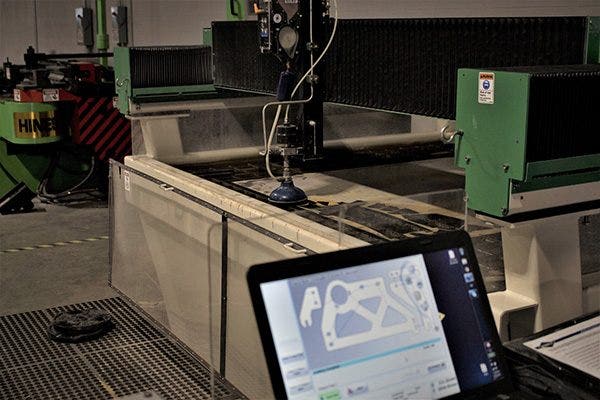
The waterjet is ready to cut out the design file
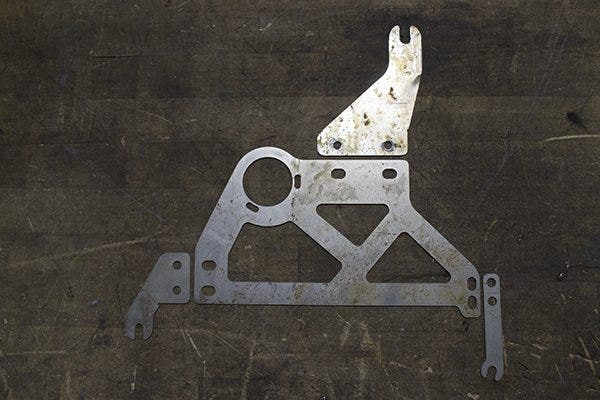
This was one of many different variations we tried out. This version came out the best
Above is the resulting part that came straight off the waterjet platform. With a little paint, we installed this on the Jeep so testing could begin.
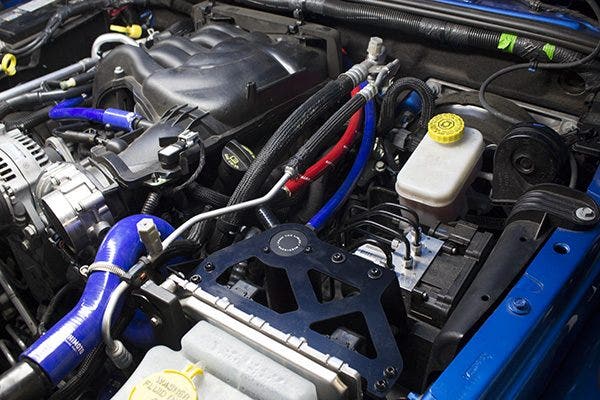
Prototype line routing and bracket ready for testing
Staying with the theme of rigidity, we found a way to make the bracket even stronger by reducing the amount of bolted connection points, opting for a more solid one-piece design. A personal touch was also added to the catch can lines, with our first ever attempt at screen-printed rubber lines. See below for the final version of this kit.
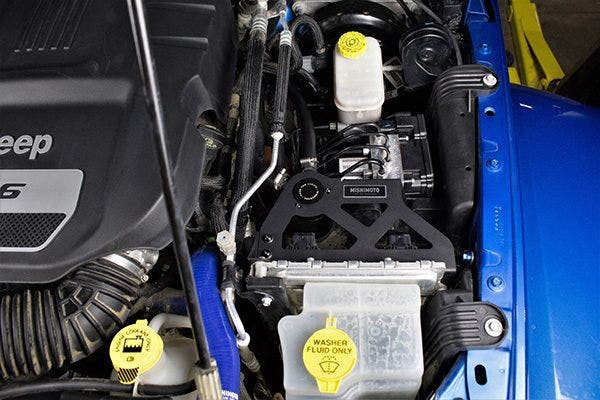
Final version of the kit, check out the paint texture!
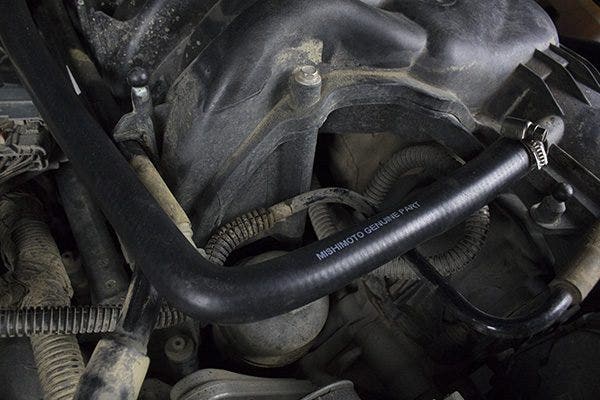
This screen print will be durable under the hood
Our earliest test clocked about 1000 miles on our system with both highway and city driving logged. The JK spat out just over 20 milliliters of blow by. This is a relatively average amount amongst most of our projects, and we do this to make sure that our cans are doing something for the system. But this wasn't the most interesting part. The full beaker sat motionless on my desk for several weeks (about 5-6 weeks) after I recorded the first test, awaiting the results from our second test. Once I went to pour out the blow-by so one of our engineers could use the beaker, I noticed something odd. There was stuff sticking to the bottom of the beaker.
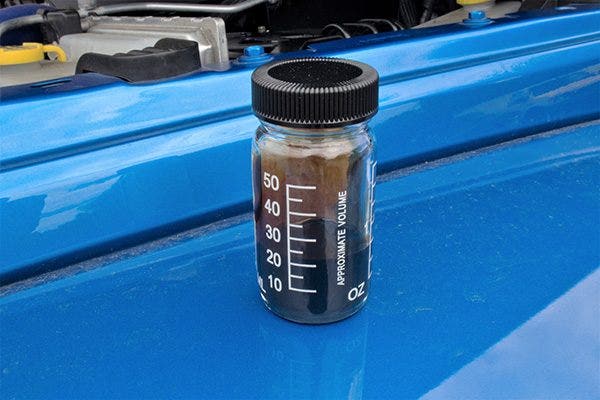
Fresh blow-by taken right out of the catch can
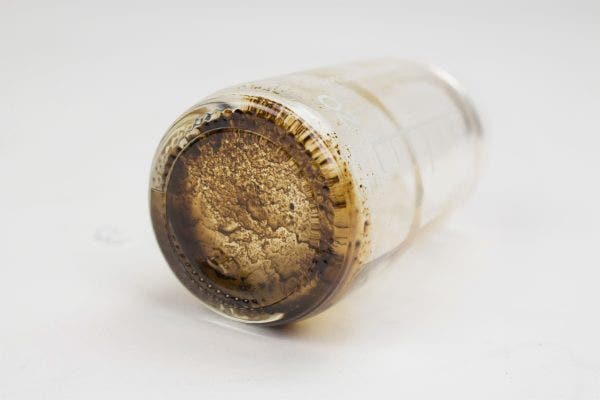
This is a high-resolution picture, zoom in to really see the gunk!
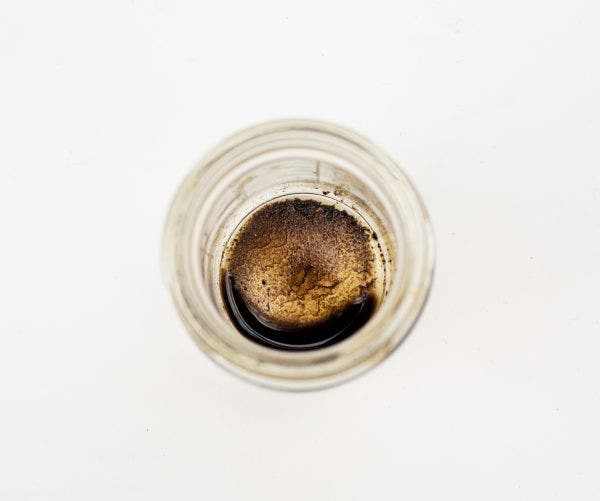
Again, zoom in!
The passing time must have let whatever solid particles and contaminants inside the fluid, but invisible to the naked eye, settle to the bottom. This is precisely the stuff catch cans help prevent from accumulating on your intake walls, manifold, and valves. That solid stuff that is clumped together sticks to your valves and causes the carbon deposits. While the fluid consists of a fuel and oil mixture, the fuel can get burned off easier than the heavier substances like oil, oil vapor, and other contaminants inside the system. They hang around the system and collect around places you wouldn't want them to.
To keep this experiment going, we performed one more 1000+ mileage test to see if we could continue collecting blow-by content throughout the summer and if the content would change. This time, opening the catch can revealed a decent amount more than the initial test, with the fluid just about to top 50 milliliters.
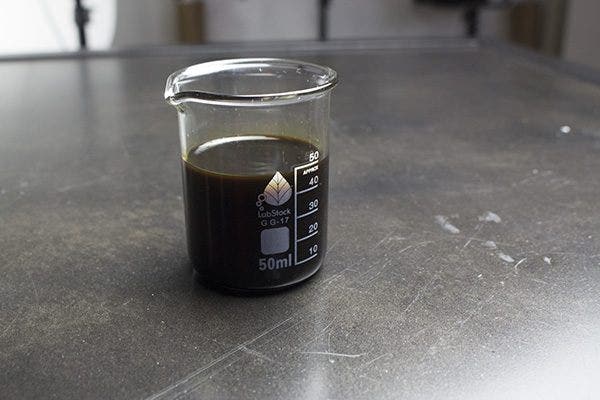
The second time around, we got even more blow-by
Seeing this amount of consistency in how much content was caught proved to us that we have a kit that works. This catch can kit will only fit the 2012+ Jeep Wrangler JK with the 3.6L engine, but we do have a kit for the 2007-2011 3.8L Wrangler that is now available for presale. Feel free to check out the engineering we did on that project. The presale for this kit will go live soon though, so keep an eye out for it! Thanks for following along.
-Diamaan




